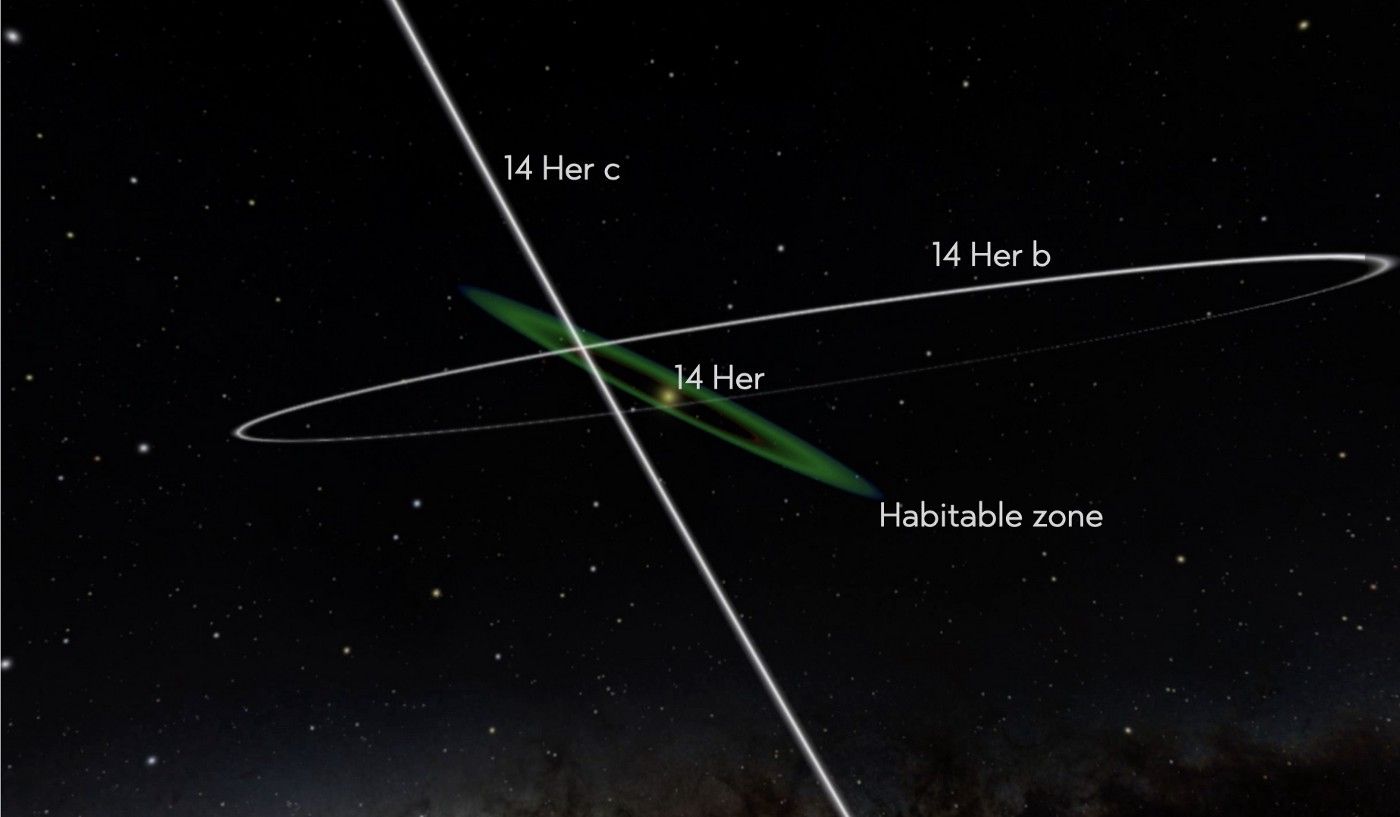Using Gaia and twenty years of radial velocity measurements, two brown dwarfs were found orbiting 14 Her in highly eccentric, misaligned orbits.

Researchers at the American Museum of Natural History led a study of this particular system, nearly 60 light-years away from our own, because it has an almost Sun-like star and is relatively nearby. It’s been studied for over two decades. But new data from ESA’s Gaia telescope combined with existing data from their Hipparcos mission provided evidence for a significant amount of acceleration in the motion of the star. The time difference between the two measurements was about 24 years, and the motions of the star differed by 31 sigma. That simply means that the star’s motion is being perturbed by some type of unseen mass. Co-author Dr. Jackie Faherty notes: Finding that a star is accelerating when it has a planet is a big red flag that there is science to be uncovered.
So the team dug through all the literature they could find on this star and managed to gather twenty years of radial velocity data. Using open-source code called ‘orvara’, they combined all the measurements and managed to create a detailed architectural picture of the entire system.
And they found two planets, brown dwarfs, with the mass of nine Jupiters and seven Jupiters. They are located 2.8 AU and 27 AU from 14 Herculis, respectively, but their orbits. Oh, their orbits are what makes this story so very interesting. The orbits are very eccentric, and that’s fine. But they are also incredibly misaligned. Lead author Daniella Bardalez Gagliuffi explains: If you were to look at these two planets from afar, the orbits would cross each other in an ‘X’ pattern with the star at the center. The 14 Her system looks like the result of a complex game of billiard balls in the sky.
In our solar system, all the major planets are aligned in the same plane, what we call the ecliptic, and that suggests they all formed in that first protoplanetary disk. In 14 Herculis, it seems that the planets were scattered by each other, perturbing their orbits and possibly even ejecting a third, smaller brown dwarf out of the system. Unfortunately, that now free-floating planet would only have been about 250–300K, very cold and very small for a brown dwarf. In other words, already difficult to detect when orbiting a star and now nearly impossible.
However, nearly impossible means there is still a chance, and the Brown Dwarfs in New York City Research Group plans to map all the planetary systems in our neighborhood to try and find more mysteries to solve.
This work was published in the Astrophysical Journal Letters, and there is also a fantastic video created by Deoin Desir using the visualization software OpenSpace.
More Information
BDNYC press release
“14 Her: a likely case of planet-planet scattering,” Daniella C. Bardalez Gagliuffi et al., 2021 December 3, The Astrophysical Journal Letters
Visualization video
This story was written for the Daily Space podcast/YouTube series. Want more news from myself, Dr. Pamela Gay, and Erik Madaus? Check out DailySpace.org.
This article was originally posted on medium.com.





